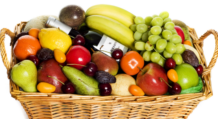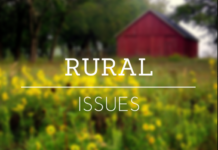Oklahoma State University
Thanksgiving day is quickly approaching, and many Oklahomans will be preparing holiday meals for their families and friends. But don’t let food poisoning be on the menu this year. FAPC offers the following tips to keep your family safe this festive season
By Mandy Gross, FAPC Communications Services Manager
Thanksgiving day is quickly approaching, and many Oklahomans will be preparing holiday meals for their families and friends. But don’t let food poisoning be on the menu this year.
“Every year in the United States, approximately 48 million people get sick because of some form of foodborne illnesses,” said Ravi Jadeja, food safety specialist for Oklahoma State University’s Robert M. Kerr Food & Agricultural Products Center. “Of those, 128,000 are hospitalized or need medical attention and, unfortunately, 3,000 people die every year.”
FAPC offers the following tips to keep your family safe this festive season.
Food handling
- Buy only government-inspected meat and poultry products, and check the “sell-by” date on all food purchases. Never buy products if the expiration dated has passed.
- Wash your hands thoroughly before and after preparing any food product.
- Use two cutting boards: one for preparing raw meat, poultry and fish, and the other for cutting cooked food or preparing salads.
Food preparation
- Never thaw the turkey on the counter. Thawing at room temperature increases the risk of bacteria growth at the surface of the meat even though the interior may still be chilled.
- Thaw the turkey in its original wrap on a tray placed in the bottom section of the refrigerator. Allow approximately 24 hours of defrost time for every five pounds of turkey.
- Thawing the turkey in cold water is safe. Submerge the bird in its wrapper in a deep sink of cold water and change the water every 30 minutes to keep it cold. Allow 30 minutes per pound to defrost a turkey in cold water.
Stuffing the turkey
- Do not stuff the turkey in advance. The chilled stuffing in the turkey will not reach a safe temperature before the turkey is done.
- Remove the giblet bag from inside the turkey before stuffing.
- Stuffing must be cooked to a minimum temperature of 165 degrees Fahrenheit.
- Precook the stuffing, so it will reach the optimum temperature before the turkey is overcooked.
- Stuff the turkey lightly because the stuffing will expand as it is cooked in the turkey. If it is too tightly packed, it will not reach a safe temperature by the time the turkey is done. Do not use more than 1/2 or 3/4 cups stuffing per pound of turkey. If you are cooking a 16-pound turkey, use no more than 8 to 12 cups of stuffing.
- An alternative is to cook stuffing in a pan to ensure the interior of the turkey is safe.
Cooking the turkey
- Use a meat thermometer to determine when the turkey is done.
- Insert the thermometer in the thickest part of the turkey thigh. Be aware dark meat takes longer to cook than any other part.
- The turkey is done when the thermometer reaches 165 degrees Fahrenheit.
- Basting the turkey while it is cooking is not necessary. Basting tools could be sources of bacteria contamination if dipped into uncooked or undercooked poultry juices and then allowed to sit at room temperature for later basting.
- Do not cook a turkey overnight in an oven set at a low temperature. Cooking a turkey at a temperature below 325 degrees Fahrenheit allows harmful bacteria to multiply.
- Once the turkey is done, remove the stuffing immediately.
- If you purchase a fully cooked turkey, pick it up hot and bring it home to eat immediately.
Storing leftovers
- After the meal remove all meat from the turkey carcass. This should be done within two hours of the turkey’s removal from the oven.
- Leftovers should be stored in the refrigerator within two hours after cooking is complete.
- Leftovers should be divided into smaller portions and stored in several shallow containers. They should be eaten within three to four days.
- If large amounts are left, consider freezing for later use. Do not wait until the leftovers have been in the refrigerator for several days to freeze. Frozen leftovers should be eaten within six months.
Eating leftovers
- Reheat leftovers to 165 degrees Fahrenheit throughout or until steaming hot. Soups, sauces and gravies should be brought to a rolling boil for at least one minute.
- Never taste leftover food that looks or smells strange. When in doubt, throw it out.




